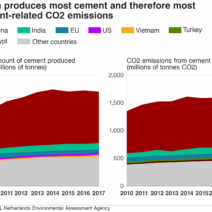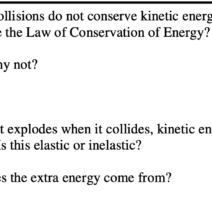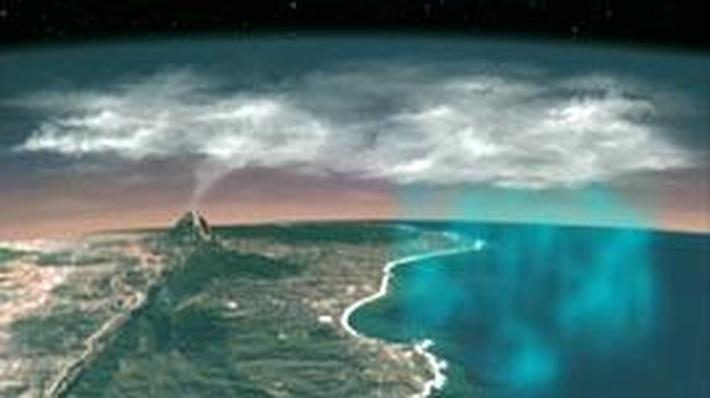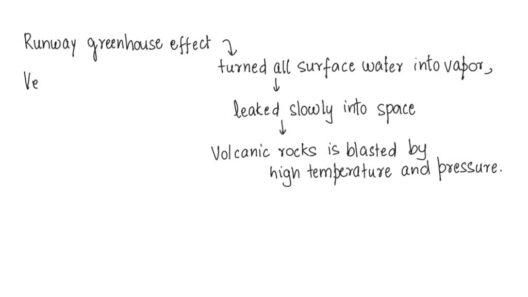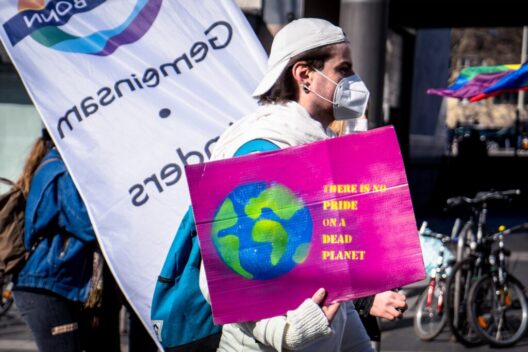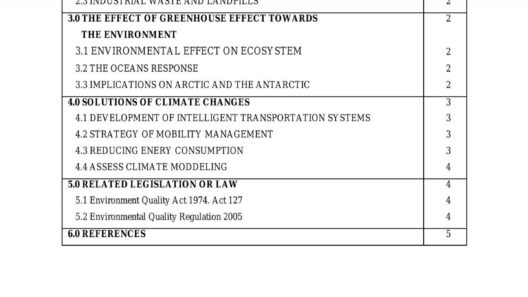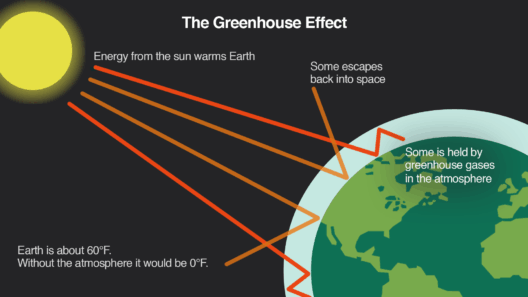What if we told you that the very air around us is, in a way, akin to an oversized blanket enveloping our planet? Yes, that fluffy layer called the atmosphere plays a crucial role in keeping Earth warm. The mechanism behind this warmth is known as the Greenhouse Effect. Let’s meander through this fascinating topic and uncover how this phenomenon works while also contemplating its implications for our future.
Let’s start at the beginning—what constitutes the Greenhouse Effect? At its core, it is the process by which certain gases in Earth’s atmosphere trap heat from the sun, keeping the planet sufficiently warm enough to support life as we know it. Without it, the Earth’s average temperature would plummet to a frigid -18°C (0°F). However, while this effect is essential for life, the cacophony of alarming climate changes raises a critical question: How much is too much?
The atmosphere is a concoction of gases, including nitrogen, oxygen, carbon dioxide (CO2), methane (CH4), and others. While the majority of these gases are harmless, greenhouse gases capture infrared radiation emitted by the Earth after it absorbs sunlight. Think of it as a greenhouse—you allow light waves to penetrate and warm plants, but the glass retains some warmth inside. The same scenario occurs on our planet with these gases, albeit with some caveats.
Now, let us dissect the principal players in this dynamic ensemble.
Greenhouse Gases Unveiled
Carbon Dioxide: The Einsteins of Gases
Carbon dioxide (CO2) has become a quintessential household name in discussions about climate change. It is emitted through various means, such as burning fossil fuels for energy and deforestation. Once released, CO2 can linger in the atmosphere for centuries, effectively suffusing the air with its heat-retaining properties.
Methane: The Little Giant
Although methane (CH4) only constitutes a small portion of the atmosphere, it is over 25 times more effective than CO2 at trapping heat over a 100-year period. Methane emissions primarily originate from agriculture and landfills. The potency of this gas underlines the importance of managing agricultural practices and waste disposal methods.
The apex of atmospheric gases, water vapor is another critical player. Its abundant presence serves as a feedback mechanism, enhancing the effects of other greenhouse gases. When the planet warms, more water vapor evaporates, leading to increased temperatures—resulting in a vicious cycle.
The Radiative Balance: Heat Exchange in Action
The Earth’s climate operates on a delicate scale of energy balance known as the radiative equilibrium. Solar radiation reaches the Earth, where it is either absorbed, reflected, or transmitted back into space. Greenhouse gases are pivotal in this process, as they allow incoming solar radiation to penetrate while preventing some of the outgoing terrestrial radiation from escaping.
This balance is crucial for maintaining a stable climate. Any perturbation in this equilibrium can lead to significant fluctuations in temperature, resulting in a range of climatic consequences. Imagine trying to keep your balance on a seesaw; a slight nudge can send one side higher and the other lower, creating an instability where equilibrium once flourished. Such is the case with increased greenhouse gas concentrations.
The Consequences of Disruption
Now the plot thickens: climate change looms as one of the foremost challenges of our time. The enhanced greenhouse effect, driven largely by human activity, leads to a warming planet, resulting in severe weather patterns, rising sea levels, and disruptions in ecosystems. Scientists predict elevated global average temperatures could reach between 1.5°C to 2°C above pre-industrial levels by the end of the century if emissions continue unabated.
We must consider the myriad implications of rising temperatures. Increased frequency and intensity of storms, prolonged droughts, and shifts in agricultural yields could spell disaster for food security. Furthermore, biodiversity faces dire threats, as many species struggle to adapt to rapidly changing conditions. Are we prepared for a world where certain beloved species become relics of the past?
Hope is Not Lost: The Path Forward
Facing this formidable challenge invokes the spirit of resilience. Innovative solutions are being explored and implemented. Renewable energy sources, such as solar, wind, and hydroelectric power, hold promise in curbing greenhouse gas emissions. The shift towards sustainable agriculture is equally essential to mitigate methane emissions while ensuring food security.
Individuals can also contribute to this collective effort. Simple actions, like conserving energy, using public transportation, and advocating for policy changes, can create ripples of influence. Collective action starts with individual responsibility. Social movements, community outreach, and advocacy can elevate this issue into the political discourse it so desperately needs.
As we stand on the precipice of what could be a cataclysmic trajectory for our planet, the inquiry arises: How will we, as stewards of this Earth, respond to the challenge of the greenhouse effect? Understanding this fundamental aspect of our climate is essential—but taking action remains paramount. Let’s not merely warm the planet; let’s work towards a sustainable and balanced way of living.
